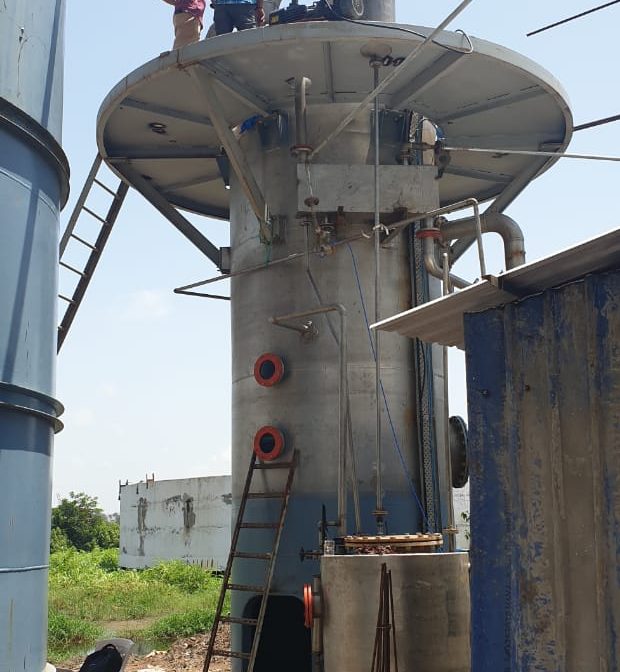About
In conventional evaporators, the energy content of the vapour stream produced is lost to a large extent or is only partially used. In comparison, mechanical vapour recompression permits the continuous recycling of this energy stream by recompressing the vapour to a higher pressure and therefore, a higher energy content. Instead of live steam, electric energy is used indirectly to heat the plant. Mechanical vapour recompression reduces the energy costs and the CO2 footprint and, consequently the environmental load.
Process
When evaporating fluids, heat is transferred to the fluid to be evaporated. In industrial-scale applications, this process indirectly takes place via an evaporator that is used as a heat exchanger. This heat is used to heat the fluid and finally to evaporate the solvent (in most cases water). Evaporation Technology Using Mechanical Vapour Recompression Multiple-effect arrangement A Product to be evaporated B Vapour C Concentrate D Heating steam F Heating steam condensate G Vapour condensate Heat flow diagram of a double effect, directly heated evaporator Decrease of the specific steam consumption in % and increase of the total heating surface oF depending on the number of effects The heat flow of a single-effect evaporator shows that the thermal energy included in the vapour (enthalpy) must be about the same as that of the thermal input on the heating side. For the normal case of water evaporation, you can produce 1 kg/h of vapour with 1 kg/h of live steam since the specific evaporation heat is about the same on the product side as on the heating side. In this way, the concentration of the non-volatile substances in the fluid is increased. The evaporated solvent is referred to as vapour. Thus, the produced vapour contains approximately the same thermal energy as the used heating steam, however, at a lower pressure and temperature level. During condensation, this thermal energy has to be dissipated again. By using the vapour produced as heating steam in a second effect, the energy requirement of the overall system will nearly halve. This principle can be continued over several effects in order to further improve the energy saving. The max. permissible heating temperature of the first effect and the lowest boiling temperature of the last effect result Different heat carriers can be used to heat the evaporator. Apart from hot water or thermo-oil, water steam is used in most of the cases which condenses on the heating side of the evaporator and which dissipates its condensation heat on the evaporation side

Applications
- Industrial painting: baths for degreasing, phosphating, passivation, washed water and eluted ion exchange resins.
- Metalworking and car parts industry
- Die casting metals and light alloys: e.g. demoulding fluids, glycols and oil emulsions.
- Chemical industry: Reactor washing.
- Leachate at MSW landfills.
- WTP reject fractions in power plants (e.g. reverse osmosis and demineralises)
- Water with a high content of oily substances, heavy metals, dissolved salts, Salt water & brine
- Dissolved oils, hydrocarbons and other suspended mixtures in contaminated water
Advantages
- Low energy costs, since only a fraction of the evaporation energy has to be used in the form of electrical energy.
- Normally only electrical energy is required as an energy source.
- Normally no steam is required in normal operation, but only for starting up.
- No cooling water is required for vapour condensation.
- Suitable for various applications.
- Retrofitting in existing plants is possible.
